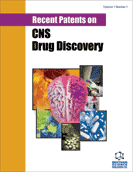Abstract
For over fifteen years, N-methyl-D-aspartate receptor (NMDAR) mediated glutamatergic neurotransmission has generated interest because of its putative role in the pathophysiology of schizophrenia. Thus far, all antipsychotic medications have centered on manipulating the dopamine receptor to treat psychosis. These medications have limited efficacy, especially in treating the cognitive and negative symptoms of schizophrenia, and serious side effects. The NMDAR now provides an entirely new array of targets around which to focus new drug development. This paper first examines components of the glutamatergic synapse and discusses the relationship between decreased NMDAR function and schizophrenia. Then, human trials that have been conducted with agents that enhance NMDAR function, whether by molecules that activate the glycine co-agonist site (GCS), or by positive allosteric modulators (PAMs) that act on non- NMDAR are reviewed. In examining patents granted in the United States for treatment of schizophrenia based on normalizing glutamatergic neurotransmission, it seems academic researchers have focused primarily on GCS agents, and pharmaceutical industries have concentrated on synthesizing PAMs. The 21st century holds promise as the era in which an entirely new type of medication for schizophrenia may be created, one with more success at treating the debilitating negative and cognitive symptoms of this disease.
Keywords: AMPA, ampakine, cognitive symptoms, D-serine, negative symptoms, glycine, metabotropic glutamate receptors, NMDA, sarcosine
 2
2





















